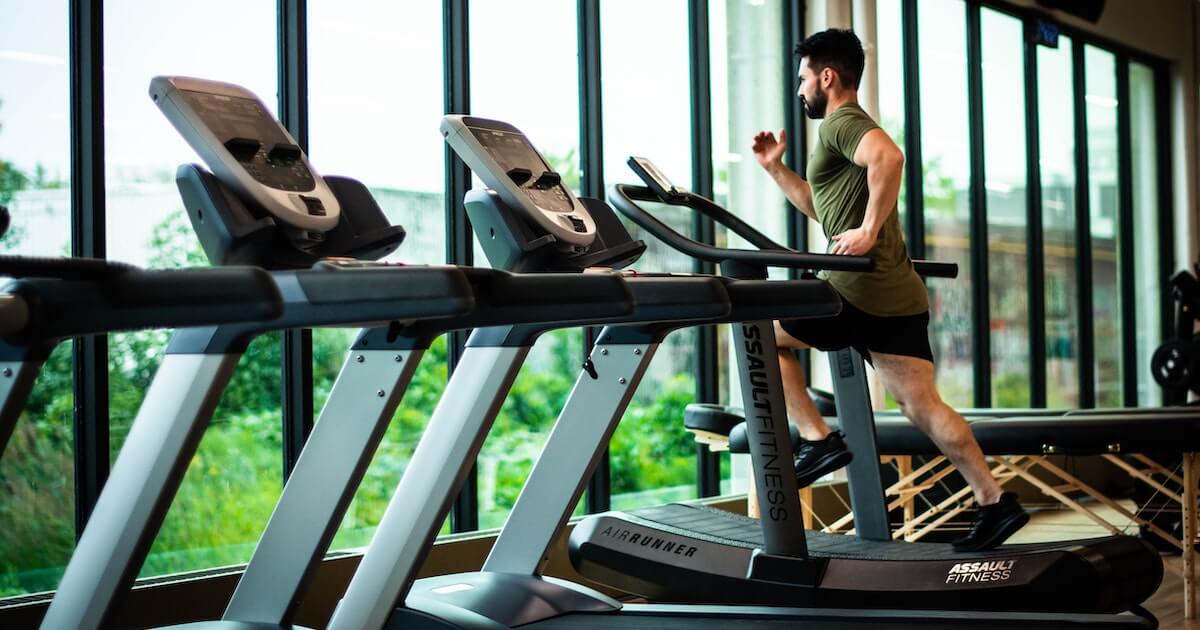Over the past year I’ve gotten a lot more into trail running, largely because of getting a puppy who loves to get out in nature even more than I do. Doing so has given me a chance to reflect on how running on the trail differs from running on the road and how doing both can complement one another and allow someone to progress their training volume while potentially mitigating risk of overuse injury. Let’s take a closer look at the pros and cons of trail running and road running.
First, Let’s Talk About Trails

An obvious pro of trail running is the scenery–variable terrain and conditions make it tough for a trail run to feel monotonous, and getting into the calm of the forest or mountains is therapeutic in and of itself. Let’s assume that your average trail run has more elevation gain than a similar distance road run. Elevation gain is particularly challenging on the heart and lungs, as it is easy to work close to your maximum heart rate on a prolonged climb. Spending time close to your maximum cardiac output is the best way to increase your cardiorespiratory fitness (it is no wonder that cross-country skiers have the highest cardiorespiratory fitness among endurance athletes). Herein, trail running may be superior in improving the capacity of our heart and lungs (Tabata et al. 1996).
Now, Let’s Consider Terrain

It is common to hear that hills are hard on the knees, and this holds some truth. Running uphill taxes your quadricep muscles more than any other muscle group, while running downhill puts heavy load on your patellar tendons (just below the kneecap). These add up to trail running more likely contributing to the development of sources of knee pain such as patellar tendinopathy and patellofemoral pain. Uphill running also places added strain on the Achilles tendon, another common site of overuse pain for runners. Additionally, research has shown that the prevalence of low back pain is higher in trail runners. If you are currently experiencing patellar or Achilles tendinopathy or low back pain with your trail running, it may be wise to temporarily move away from the trail and on to level ground to better allow these areas of symptom to settle down. It should also be noted that the risk of traumatic injury such as knee or ankle sprains may be higher in trail running due the uneven surfaces typically run on (Malliaropoulos et al. 2015).
Compared to the Benefits of Road Running

Road running has some obvious pros as well–it is tough to beat the convenience of hopping out your front door and right into your run. If you are someone that finds motivation in time and pacing, running on the road is ideal for you. It can be a bit easier to monitor and progress your training volume and intensity on the road if you are running similar tracks each time, which can assist with motivation. Running on hard surfaces such as pavement is not inherently bad, but it does create more ground reaction force that must be absorbed by the body in comparison to soft surfaces. Overuse injuries that are contributed most significantly by impact volume such as plantar fasciopathy, shin splints and stress fractures are more likely to come up when running on hard, non-variable surfaces. If you have a history or are currently managing any of these ailments, you may want to consider moving your training on to softer surfaces (Tschopp and Brunner, 2017).
Variety Wins for More Reasons than One
Ultimately, I believe overuse injury is best avoided by bringing variability into your training. Using a combination of trail and road running may allow for a higher relative volume of training while potentially reducing the risk of developing an overuse injury contributed by the surfaces you are running on. It is important to note that modifying the terrain you run on is likely less significant than modifying overall training volume/programming and biomechanics in relation to managing and avoiding overuse injury. It is also important to ensure your training matches your running goals. If you are training for a marathon road run, you should absolutely put most, if not all, of your mileage on the road leading up to the race, and the same goes for the trail. But if you are running to stay fit and for the agonizing enjoyment of it, adding some variability to your training may be a nice change of pace!

Author: Luke Miles, MPT, BSc KIN | Physiotherapist
Book Your Appointment With Luke Miles
If you have questions about your training and how to prevent or recover from overuse injuries, contact our clinic today at (250) 382-0018 or book an appointment online with physiotherapist Luke Miles at Diversified Health Clinic in downtown Victoria.
References
Malliaropoulos, N., Mertyri, D., and Tsaklis, P. 2015. Prevalence of injury in ultra trail running. Human Movement, 16(2): 52-59.
Tabata, I., Ogita, F., Miyachi, M. 1996. Effect of moderate-intensity endurance and high-intensity intermittent training on anaerobic capacity and VO(2max). Medicine & Science in Sports & Exercise, 28(10): 1327-1330.
Tschopp, M., and Brunner, F. 2017. Disease and overuse injuries of lower extremities in long distance runners. Zeitschrift fur Rheumatologie, 76(5): 443-450.












 Sciatica is the term used to describe sciatic nerve pain. Nerve pain can occur anywhere in the body while sciatic nerve pain affects the lower back and lower, posterior extremities. This is because of how the sciatic nerve branches off your lower spine (just above your buttocks) before threading down through your glutes, hamstrings and calves. Sciatic nerve pain often occurs on one side of the body, or is markedly worse on one side of the body, and can arise from various physical triggers as outlined below.
Sciatica is the term used to describe sciatic nerve pain. Nerve pain can occur anywhere in the body while sciatic nerve pain affects the lower back and lower, posterior extremities. This is because of how the sciatic nerve branches off your lower spine (just above your buttocks) before threading down through your glutes, hamstrings and calves. Sciatic nerve pain often occurs on one side of the body, or is markedly worse on one side of the body, and can arise from various physical triggers as outlined below.



